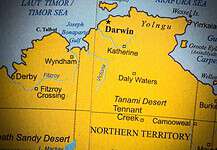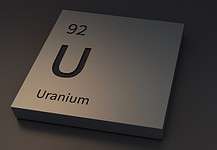AUSTRALIA’s biggest diamond mine could soon be sold by mining giant Rio Tinto in a move that the company said was designed to maintain profitable assets.
Rio’s wholly-owned Argyle mine is one of the world’s largest suppliers of natural and coloured diamonds, producing about 20 million carats each year from WA’s East Kimberley region.
Rio Tinto Diamonds (RTD), part o Rio’s Diamonds and Minerals product group, also operates the Diavik diamond mine in Canada, in which it owns a 60 per cent stake, and the Murowa diamond mine in Africa, in which it owns a 78 per cent stake.
The company also owns the advanced Bunder diamond project in Madhya Pradesh, India.
Despite these projects, a strategic review of Rio’s diamond business commissioned by the company in March is currently exploring a range of options for potential divestment of its diamond interests in a process that is expected to take some time.
“A strategic review is a regular process for Rio Tinto,” Argyle Diamonds general manager operations Shane Johnson said. “The business is being assessed within Rio Tinto’s strategy of operating large, long-life, expandable assets, now and in the future.
“This is a healthy process that will ultimately support the diamondbusiness’s ability to survive.” Since Rio announced that it had begun the review, leading media have reported that global private equity firm KKR is eyeing off the company’s diamond portfolio.
These reports came after KKR hinted it was also interested in BHP Billiton’s diamond business, which is under evaluation, with the view of merging all operations in order to challenge leading diamond miners.
BHP’s diamond projects include the Ekati diamond mine in Canada and it has been reported that KKR is leading the bid for the US$750 million auction of this asset.
Despite the review, Rio is still committed to the construction of the underground mine at Argyle, scheduled for completion by the end of 2013.Argyle diamonds Commissioned in December 1985, the Argyle diamond mine has produced more than 760 million carats of rough diamonds.
The mine produces not only white and champagne diamonds, but is also the world’s only consistent producer of rare pink diamonds. In fact, more than 90 per cent of all pink diamonds come from Argyle and they attract about 20 times the price of an equivalent white diamond.
While the majority of diamonds produced at Argyle are white, pink diamonds are the most sought-after stones. To put their rarity into perspective, for every 1 million carats of rough diamonds produced at the
mine only 1 carat is suitable for sale at the Argyle Pink Diamonds Tender: an auction that allows customers to bidon exceptional diamonds not publicly available. Of the 600 million stones produced by the mine each year, only the best 50 or so are included in the tender. This equates to about 40 or 50 carats in total and prices usually start at about US$100,000 per carat.
Open pit mine
The Argyle mine’s single pipe has been mined using both alluvial and open pit methods.
The open pit was originally named Argyle kimberlite 1 (and referred to as AK1) after geologists initially thought the diamond-bearing rock was kimberlite.
The principal activities in the AK1 open pit – which is 2km long, 1km wide and covers an area of almost 300 hectares – are the removal of overburden and the collection of diamondiferous ore.
Ore from the open pit is delivered to the process plant. One of the most efficient in the world, it is capable of processing up to 11 million tonnes per annum of ore.
The unwanted overburden is deposited on the perimeter of the pit and represents about six times the volume of the dimondiferous ore.
In February, Rio discovered Australia’s biggest rough diamond: a 12.76ct stone that represented not only a positive discovery for Rio but the diamond industry as a whole.
“The Argyle ore body is an extraordinary resource and even more than 30 years after discovery we are being surprised and delighted by its bounty – it just keeps giving,” Mr Johnson said.
Once cleaned, washed and weighed, the diamonds are transferred to Rio’s sales and marketing offices in Antwerp, Belgium, where they are prepared for sale.
Rio also operates a niche cutting and polishing factory in Perth for pink diamonds.
Underground project
In December 2005, Rio was given the go-ahead for an expansion project involving the construction of an underground block cave mine to extend mine life until at least 2019.
At a cost of more than $800 million, the expansion is expected to be completed by 2013 and will facilitate processing of about 9mtpa of ore.
There are four phases to the Argyle underground project: development, construction, commissioning, and production.
The funding is set to cover project development and construction of extraction services, crushers, a conveyor and pump stations at the mine.
Mr Johnson said that the expansion was the biggest underground mining project in Australia and was a challenge in both size and complexity.
“The block cave at Argyle is an immense engineering and geophysical challenge, and we are comfortable that it is on track for completion by the end of 2013, within the current budget,” he said.
The lamproite pipe that contains the diamondiferous ore is about 1.5km long and ranges between 150m and 500m wide, extending to about 600m below the planned final base of the AK1 pit.
Development of the underground operation began in the fourth quarter of 2008, but the project was stopped in 2009. It was restarted in 2010, in response to global market conditions.
In December 2011, a further $0.5 billion capital outlay was approved for the Argyle underground project, reflecting development delays primarily caused by a record 2010-2011 wet season and adverse exchange rate movements.
Mr Johnson said that the halt on the underground development did not affect Rio’s decision to re-evaluate its diamond operations.
“Rio is looking at its ongoing presence in the diamonds sector rather than performance of a single asset,” Mr Johnson said.
“The Argyle mine is a world-class diamond asset that will be playing an important role in feeding demand for diamonds in both established and emerging markets.”
Production
According to Rio’s 2011 annual report, RTD had a slight slump in production last year and mined only 11.7 millioncarats: a 15 per cent reduction from 2010. Argyle production declined 24 per cent compared with 2010.
The company said this was a reflection on adverse weather conditions, maintenance shutdowns in the processing plant and the transition to underground mining at Argyle.
The company’s total underlying earnings from its diamond projects was US$252 million, 23 per cent lower than 2010 earnings.
Rough diamond prices improved strongly in the first eight months of 2011 due to restocking in the US plus continued growth in Chinese and Indian consumer markets.
Despite some softening towards the end of the year, rough diamond prices improved 24 per cent year on year.
2012 outlook
Throughout 2012, Rio will continue the transition to underground mining at Argyle and Diavik: both important milestones for the company that will help secure much needed global supply.
The company expects demand to continue to grow strongly, driven by China and India, which will together represent about 20 per cent of global diamond consumption in 2012 and 40
By Helena Bogle








































